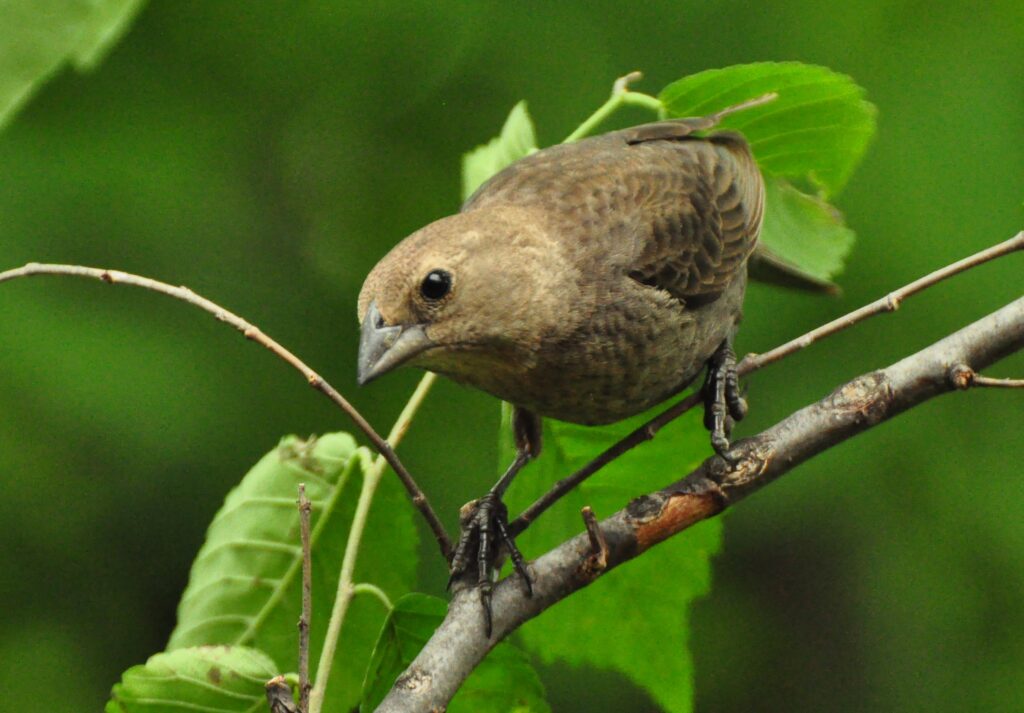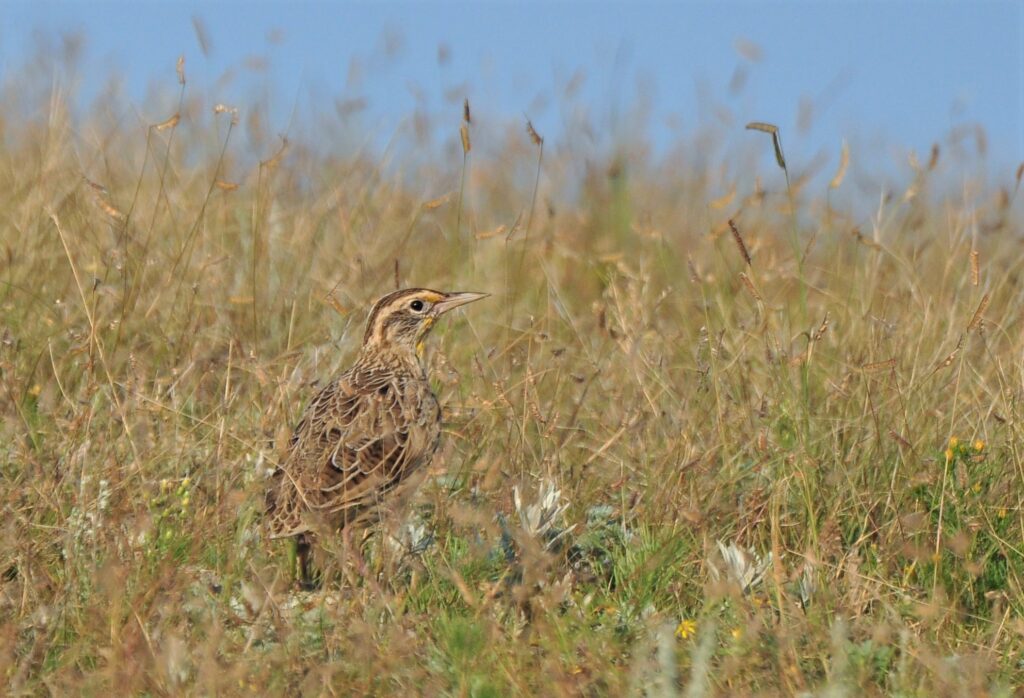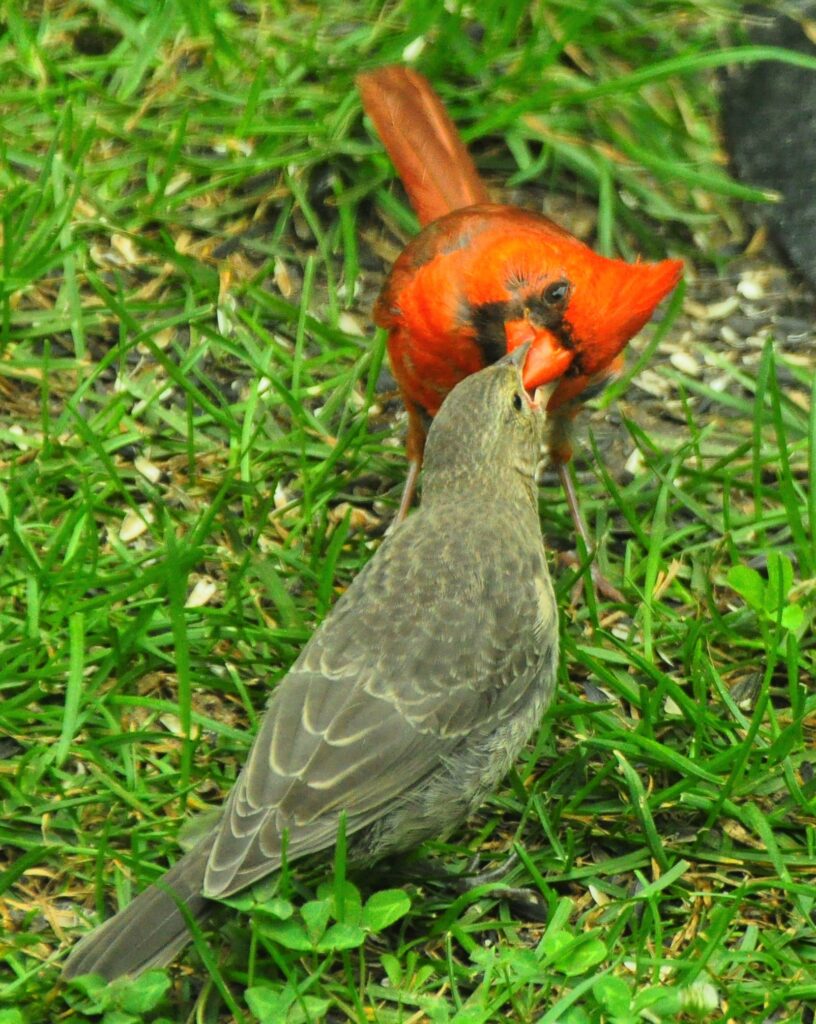Photography courtesy of Lowell Washburn, all rights reserved.
Like many of you, I maintain backyard bird feeders. Winter, spring, summer, or fall; observing backyard birdlife provides year-round entertainment. Supplying a healthy variety of foods attracts a wide variety of species and a maximum number of visitors. When it comes to backyard birding; ‘The more the Merrier’ is my motto.
But there are some notable exceptions. The brown headed cowbird, for example, is one species that I’m not especially fond of attracting. So much so, that I’ve included the bird on my short list of “Unwelcome Visitors”. The reason is simple. Cowbirds are World Class nest parasites, and the freeloaders are having a field day this summer.
Historically, cowbirds were creatures of the open prairie, following nomadic herds of American bison where they gleaned from a bountiful supply of insects that accompanied the massive herds of grassland grazers. Today, cowbirds mostly follow domestic herds of Angus cattle.

Cowbirds are somewhat unique in that they do not build nests of their own, but rather lay their eggs in the nests of other species. The habit developed, it is thought, because cowbirds could not build permanent nests and rear their young while simultaneously following widely ranging herds of bison. An effective solution was to let someone else – a host species — raise the cowbird’s young. Cowbird eggs are usually larger than those of their hosts, hatch sooner, and quickly outcompete emerging nest mates which soon starve or are pushed out of the nest.

Traditional victims – such as prairie nesting meadowlarks – were well adapted to dealing with marauding cowbirds and often recognized and evicted the alien eggs from their nests. But as the open prairies and the great bison herds vanished, cowbirds quickly adapted to an increasing number of new host species. Many of these species – including warblers, thrushes, and others – inhabited increasingly fragmented tracts of forest lands. Unfamiliar with the way of the cowbird, naive populations of tree nesters were quickly exploited.

Female cowbirds are amazingly adept at finding the nests of other birds. Females visiting my backyard will typically take a perch from which they intently monitor the movements of every other feathered visitor. Once a victim is selected, the cowbird flies to its nest and deposits a single egg. The routine is repeated time and again as new nests are discovered. As the summer progresses, evidence of the cowbird’s success becomes apparent. This summer has been no exception. Although I was aware of three nesting pairs of cardinals, only one of those pairs was successful in raising young cardinals. The other two pairs each raised a single baby cowbird.

I also spotted the delicately woven nest of a chipping sparrow hidden within the dense branches of a short evergreen. As was the case with the unfortunate cardinals, they also raised a single baby cowbird. Although the newly fledged cowbird would accept an occasional seed from the feeders, it wanted – or perhaps I should say demanded – a steady supply of insects which its surrogate parents dutifully collected. The weight of the begging cowbird probably exceeded that of the chipping sparrows by two or three times, which made keeping the fledgling filled a daunting task.

The summer nesting season is winding down. Maybe the ‘chippers will be more successful next year.


 Tom Cope
Tom Cope Sue Wilkinson
Sue Wilkinson Susan Judkins Josten
Susan Judkins Josten Rudi Roeslein
Rudi Roeslein Elyssa McFarland
Elyssa McFarland Mark Langgin
Mark Langgin Adam Janke
Adam Janke Joe Henry
Joe Henry Kristin Ashenbrenner
Kristin Ashenbrenner Joe Wilkinson
Joe Wilkinson Dr. Tammy Mildenstein
Dr. Tammy Mildenstein Sean McMahon
Sean McMahon